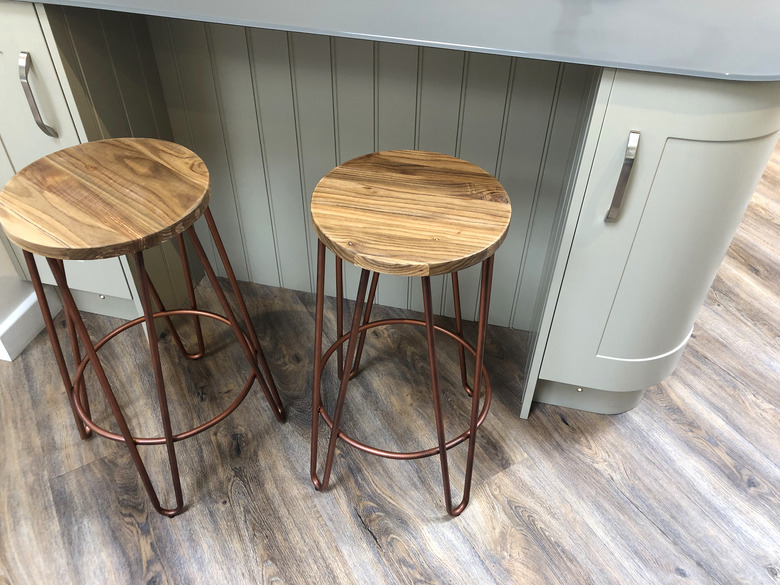Removing Scuff Marks From Vinyl Plank Flooring
We may receive a commission on purchases made from links.
Dark-soled shoes or dirty shoe soles sometimes leave scuffs on hard floor surfaces, including vinyl plank flooring. While these scuff marks aren't permanent, regular mopping won't always remove them. Instead, a little friction from a rubber eraser, a melamine foam eraser, or even a tennis ball does the trick.
Erasing Scuffs on Vinyl Planks
Erasing Scuffs on Vinyl Planks
A relatively new, clean, and soft pencil eraser is just as good at removing scuffs on vinyl plank flooring as it is at removing pencil graphite from paper. Gently rub the clean eraser along the scuff, rather than back and forth across it, to avoid spreading it in case it's actually some type of dirty or greasy residue rather than a typical shoe scuff mark. When the eraser looks a bit dirtier, rub it on a clean sheet of paper to clean it off, then go back to erasing the scuff on the floor.
For an area with a lot of scuffs, a larger art-gum eraser works well. Since these are also made of rubber, they grip the floor and lift any scuff residue upon it. Avoid using any eraser that feels dirty, hard, or gritty, as these may make more of a mess or may even scratch the vinyl planks. No matter which eraser type you use, vacuum or sweep up the eraser bits on the floor afterwards.
Melamine Foam, Meet Floor Scuffs
Melamine Foam, Meet Floor Scuffs
Melamine foam erasers, sometimes called melamine foam sponges or Magic Erasers, excel at removing scuffs from all sorts of hard flooring materials, as well as baseboards. Before using the sponge all over the floor, it's best to test it in an inconspicuous area, as it may mar the finish on some types of vinyl plank flooring.
Wet the edge of a fresh melamine foam sponge, wringing out as much water as possible. Gently scrub the scuff marks on the floor using the damp portion of the foam sponge and applying minimal pressure. Check the used portion of the sponge from time to time; if it looks dirty, wet another portion of the foam, wring out excess moisture, and scrub any remaining scuff marks with the clean, damp area of the melamine foam.
Tennis (Ball), Anyone?
Tennis (Ball), Anyone?
A clean, light-colored tennis ball offers just enough buffing power to remove scuffs from vinyl floors. Rub the tennis ball over the scuff mark; if you find that it takes too much pressure to make noticeable progress, cut a slit or an X in the tennis ball instead. Hold the ball in a vise rather than in your hand and use a sharp utility knife to make the cuts. Push a mop or broom handle into the hole, then use the handle's leverage to buff the scuffed area of the floor with the ball.
Rubbing Alcohol to the Rescue
Rubbing Alcohol to the Rescue
Isopropyl alcohol, the regular rubbing alcohol sold in any drug store, removes scuffs that don't come up easily with friction-based cleaning methods. Pour a little rubbing alcohol onto a lint-free white cloth, rather than one with a dye that might bleed and leave a stain on the floor.
Blot the scuff marks and gently wipe them up, checking to see if a simple blotting does the job. If not, rub the area with the alcohol on the cloth. If the scuffs still won't come up, leave the alcohol-soaked portion of the cloth on the marks for a minute or two, then rub the area with the cloth.
Rubbing alcohol is safe for most vinyl plank flooring, but it's best to consult the flooring manufacturer's care instructions before trying any cleaning products on the floor for the first time. If unable to find that information, test the alcohol in an inconspicuous area before using it in areas of high visibility.
